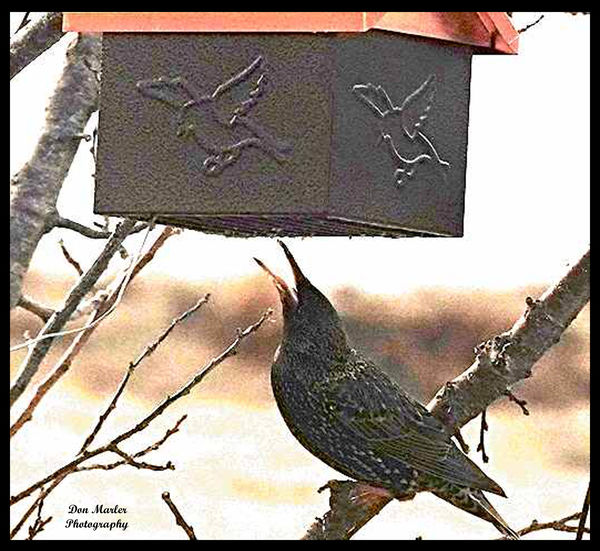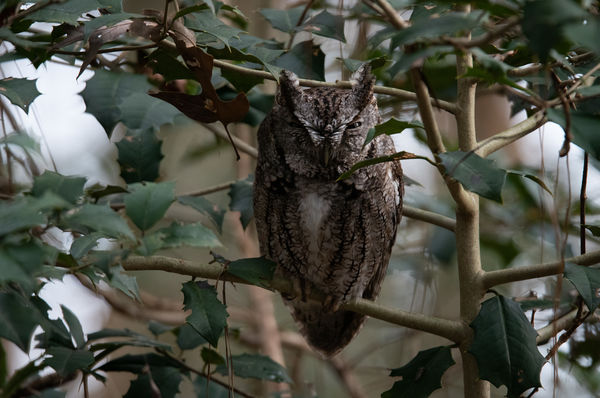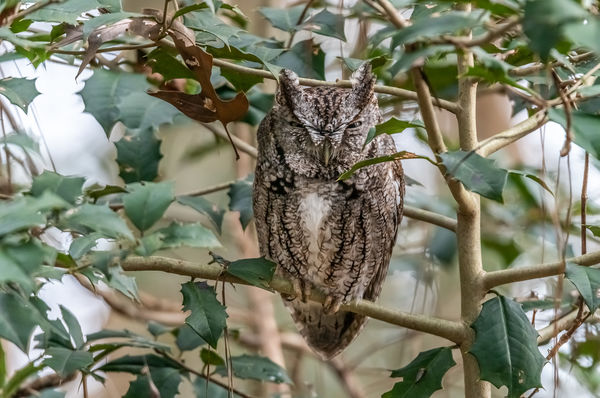Is it Best to Expose for Your Subject, the Background or In-Between in bright sunlight without flash or reflectors?
Feb 4, 2021 08:24:59 #
Shooter41
Loc: Wichita, KS
When photographing outdoors in natural bright sunlight and harsh shadows, without being able to use reflectors or flash, and the range of light and darkness exceeds the capabilities of your camera sensor, is one better off exposing for the detail in the lightest area, darkest area or half way in between? The three attached images not only show the intelligence of Starling to solve a problem in being able to get suet from the bottom of a suet feeder designed to keep Starlings out, but is an example of editing around blown out images in bright sunlight. Would you experienced male and female outdoor, natural light photographers please share your thoughts and suggestions for improvement? Thank you in advance.
Feb 4, 2021 08:40:41 #
Ysarex
Loc: St. Louis
Your subject is the bird. First expose for the subject. Second expose to not blow diffuse highlights if possible. To deal with high contrast lighting and high DR scenes capture and process a raw file.
Feb 4, 2021 10:32:13 #
Shooter41 wrote:
When photographing outdoors in natural bright sunl... (show quote)
I suggest you bias your exposure towards your subject. By shooting raw you have a little latitude to "shape" the light with some masking in your raw converter, and if not, you can use luminosity masking in a raster editor to isolate and work on those darker areas. Though neither are a substitute for proper lighting.
Feb 4, 2021 12:16:21 #
Shooter41 wrote:
When photographing outdoors in natural bright sunl... (show quote)
In general, exposing for the highlights is preferred in digital photography - especially if they are part of the SUBJECT. Most people who photograph birds are looking for correct color and feather detail in the subject/BIRD - To this end, you would/need to be exposing for the bird and letting all else go where it may. But, sometimes, the bird's surroundings become almost as important as the bird itself and therefore, compromises/decisions must be made. Shooting raw, using a a low MP full frame camera, lower ISO, using in camera rapid sequence multi-exposure HDR for mostly stationary subjects, and judicious PP can help you.
.
Feb 4, 2021 12:21:12 #
I shoot RAW and expose for the subject. What good is the photo if the subject is blown out or too dark to be able to capture any detail? Shooting in RAW gives me the maximum ability to darken highlights and lighten dark areas.
Feb 4, 2021 12:24:13 #
# 1 looks the best to me, the last two seem to be Pixelated and out of focus, I am not sure my examination of these 3 Photos are Accurate, I did not fully understand your Concerns.
Feb 4, 2021 16:24:21 #
Shooter41
Loc: Wichita, KS
imagemeister wrote:
In general, exposing for the highlights is preferr... (show quote)
Dear imagemeister...You wrote that judicious PP can help me. (What is PP?)
Feb 4, 2021 16:32:42 #
Shooter41
Loc: Wichita, KS
Silverrails wrote:
# 1 looks the best to me, the last two seem to be Pixelated and out of focus, I am not sure my examination of these 3 Photos are Accurate, I did not fully understand your Concerns.
Dear Silverrails...Don't feel bad about not fully understanding my concerns. Believe me, you are not alone in not understanding my concerns. My concern regarding photographing black Starlings in the bright afternoon sunlight under circumstances that do not allow me to use flash or reflectors on the dark subject to make the exposure fall with the range of the sensor or my camera is to avoid washing out either highlights or shadows by correctly deciding if it is better to exposure perfectly on the dark bird, or perfectly on the background or somewhere in between to avoid losing detail both places. (I shoot with my camera set on manual so that I can adjust the aperature, shutter speed and ISO setting to be the best exposure possible, so my concern is how to fine tune my camera for the best result after edigint Thank you for your comments.
Feb 4, 2021 16:36:15 #
Feb 4, 2021 16:45:10 #
Shooter41
Loc: Wichita, KS
National Park wrote:
I shoot RAW and expose for the subject. What good is the photo if the subject is blown out or too dark to be able to capture any detail? Shooting in RAW gives me the maximum ability to darken highlights and lighten dark areas.
Dear National Park...
I too have tried shooting a combination of Raw and JPEG and exposing for the dark bird, which makes my background extremely bright and forces me to mask the bird, darken the background and put the bird back in the image with correct exposure. (This involved a lot of extra work for an average outcome.)
I have also tried shooting the background exposed correctly and then dodging to lighten the bird and improve the loss of detail a bit. (The result looked "overcooked!)
My best result seems to be when the bird is facing into the sunlight and the face and head of the bird is exposed closer to that of the background allowing me to maintain much of the detail of that part of the bird. Another trick I have used when the roof of the suet container is so highlighted that I can never get the detail back is to crop the roof out of the image altogether, since the bird house is not the subject. Thank you for your suggestions.
Feb 4, 2021 16:46:18 #
Unless there is something really important in the background for the viewer to see, it is usually best to expose for the subject. In your example, you are actually dealing with two subjects - the primary (the bird) and secondary (the feeder). In such a situation, both subjects need to be considered when selecting the exposure setting. The distant background and the branches are of little importance; the viewer won't be paying much attention to those elements. You can let them blow out; the viewer won't care!
Feb 4, 2021 16:50:34 #
Shooter41
Loc: Wichita, KS
Gene51 wrote:
I suggest you bias your exposure towards your subject. By shooting raw you have a little latitude to "shape" the light with some masking in your raw converter, and if not, you can use luminosity masking in a raster editor to isolate and work on those darker areas. Though neither are a substitute for proper lighting.
Dear Gene51...Your suggestions are well taken. One thing that I have learned recently is that I push the shutter too often and need to pass on many images I have been recording by simply knowing there is no way to salvage a decent image from some lighting situations that are beyond saving. IE...Quality over quantity!
Feb 4, 2021 16:52:53 #
Shooter41
Loc: Wichita, KS
rook2c4 wrote:
Unless there is something really important in the ... (show quote)
Dear rook2c4...Your observation is excellent! I need to expose so as to not blow out the bird or the feeder and forget about worrying about the rest. Well done and thank you.
Feb 4, 2021 17:21:10 #
Shooter41 wrote:
Dear imagemeister...You wrote that judicious PP can help me. (What is PP?)
Post Processing
Feb 4, 2021 17:30:52 #
Shooter41 wrote:
Dear Gene51...Your suggestions are well taken. One thing that I have learned recently is that I push the shutter too often and need to pass on many images I have been recording by simply knowing there is no way to salvage a decent image from some lighting situations that are beyond saving. IE...Quality over quantity!
Here is a practical example, taken with a D810 and a Sigma 150-600 Sport, at ISO 1800, F7.1, 600mm hand held at 1/320 sec. I had no time to check settings but I knew I was kinda close. The first image is not adjusted, the second is after adjusting for about 1/2 stop overall underexposure, and a little more on the dark side of the owl.
I literally stumbled on this little guy by accident - but he was sleepy and didn't mind me at all. I was able to get a few shots of him, then moved on, not wishing to disturb him.
If you want to reply, then register here. Registration is free and your account is created instantly, so you can post right away.







